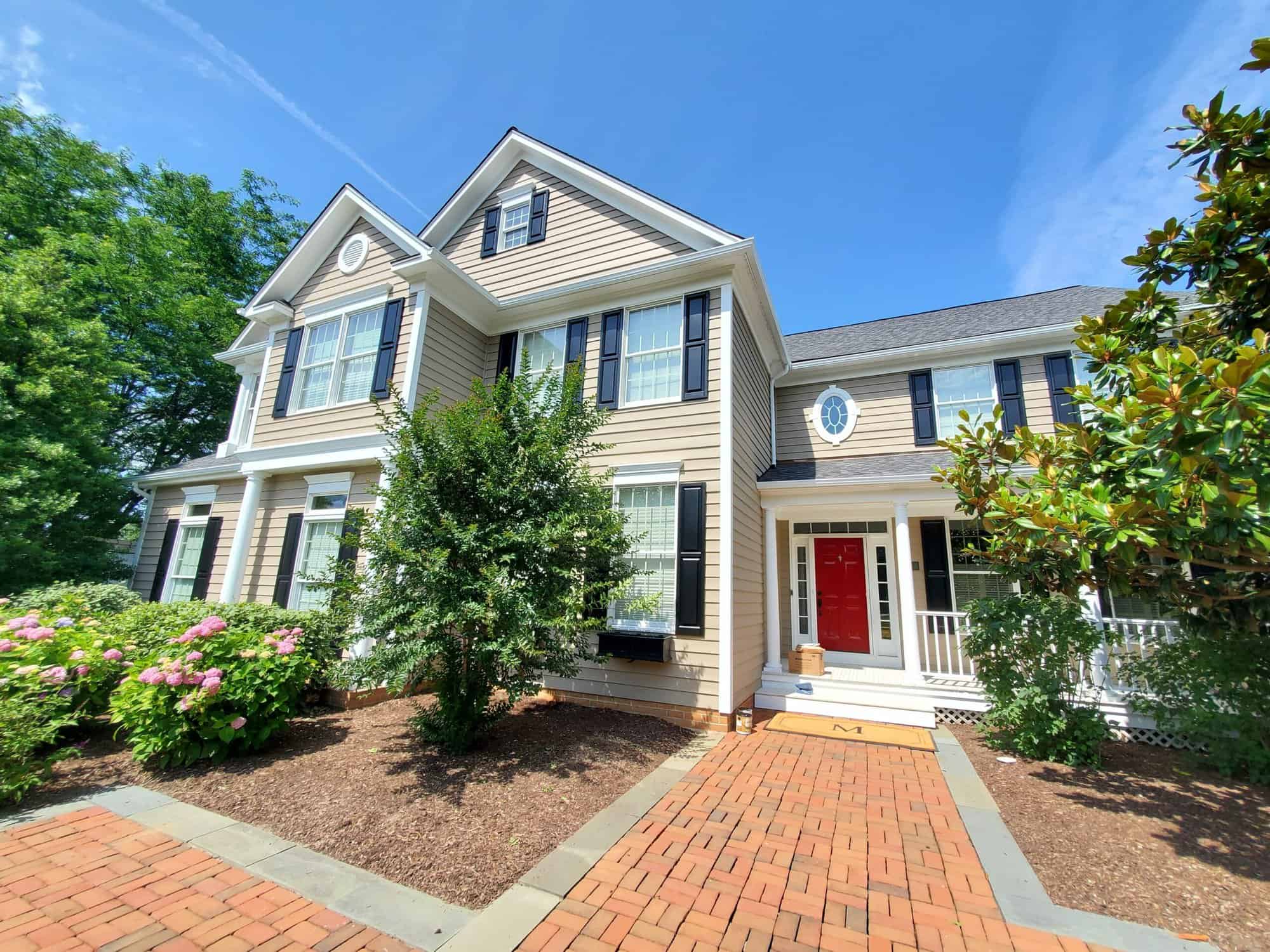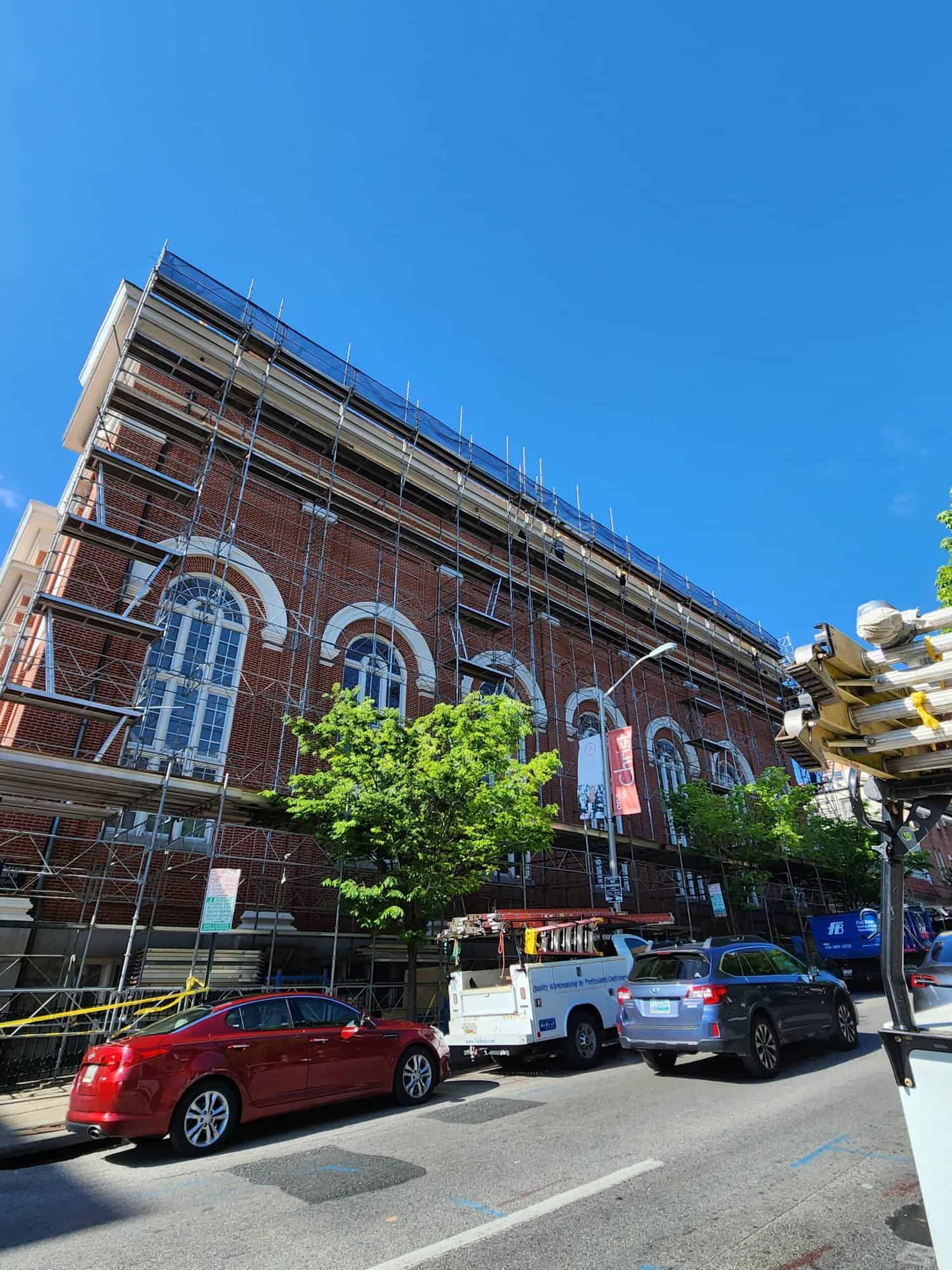So, you’re standing there with a roller in one hand and a can of primer in the other. You’ve patched the wall, maybe sanded a little, and now you’re wondering: how many coats of primer do I need?
It’s a good question because the answer depends on more than just the type of surface. In Parkton, MD, homes range from older properties with textured ceilings and flaking plaster, to newer builds with fresh drywall and unpainted wood. That means one project might call for one coat, while another needs three.
If you’ve ever battled stains that bleed through or seen paint peel in patches, chances are it started with the primer—or lack of it. So let’s talk about when one coat works, when two is better, and when three is worth the time. We’re keeping this straightforward, honest, and packed with insight to help for your next house painting project.
Key Takeaways:
- How many coats of primer do I need? One coat works for clean, previously painted walls.
- Two coats are best for drywall, bare wood, or color changes.
- Three coats help cover stains, damage, or rough surfaces.
- Dry time, surface condition, and material all impact primer needs.
- Professional painters in Parkton, MD can guide your project.

When One Coat of Primer Gets the Job Done
In some cases, one coat of primer is just right. No more, no less. This usually happens when you’re repainting a well-kept wall in a similar shade or working over a clean, smooth surface with no major adhesion issues.
One coat is usually enough when:
- The surface is already painted and you’re not changing the color drastically
- There are no stains, heavy textures, or shiny areas
- You’re using a latex paint with built-in primer
- The surface is in solid condition, like in a guest room, hallway, or newer room addition
That said, don’t skip prep. Clean the area first to remove dust or oils, sand any gloss with light sandpaper, and make sure there’s no hidden mildew lurking. Even if one coat is enough, it only works if it can bond properly.
This is common with well-maintained homes or interior projects where the paint color is just getting a fresh coat, not a full overhaul.
Why Two Coats of Primer Are the Sweet Spot for Most Projects
Ask any experienced painter, and they’ll tell you—two coats of primer is often the safe, smart middle ground. It’s what we recommend most of the time in Parkton, especially for uneven surfaces, unfinished wood, or bare drywall.
You should go with two coats if:
- You’re working with brand new drywall or joint compound patches
- You’re changing from a dark color to a much lighter one
- You’re covering smoke stains, water damage, or mold-prone spots
- The surface is porous, like masonry, unpainted wood, or older plaster
The first coat starts the bonding process. The second coat smooths things out and creates an even, consistent base for your paint. Skipping that second round often leads to blotchy walls, uneven resin absorption, and poor adhesion.
Three Coats? Sometimes It’s Worth It
Three coats of primer might sound like overkill, but in a few cases, it’s the smartest move. You’ll thank yourself later when your paint doesn’t bleed, peel, or flake.
Three coats make sense when:
- You’re sealing popcorn ceilings or heavily textured plaster
- You’re working with concrete, old masonry, or rough wood siding
- You’re dealing with major water stains, smoke damage, or high-humidity areas like a bathroom
- The surface was previously coated in low-quality or peeling oil paint
Some older homes around Parkton have tricky surfaces that suck up primer like a sponge. Applying three coats helps fill in surface inconsistencies, control porosity, and give your paint a real shot at lasting. It’s not about being fussy—it’s about making your next coat of color count.
What Impacts the Number of Primer Coats You’ll Actually Need?
Let’s keep this real: not every surface is created equal, and a few factors can affect your game plan.
- Surface type: Drywall, metal, wood, and concrete all absorb differently.
- Surface condition: Clean, smooth surfaces need less help than rough, stained ones.
- Color change: Going from navy blue to white? You’ll need more than one coat.
- Previous paint: A shiny finish or old oil paint requires more prep and primer.
Another thing to think about? The climate. Parkton summers can get sticky, and that humidity affects dry time. So don’t rush between coats. Let them dry fully so they actually do their job.
Different Materials, Different Primer Rules
Different surfaces mean different prep and primer needs. Here’s a quick breakdown based on what we see most often around Parkton, MD.
- Drywall: Always prime, usually two coats. Bare joint compound sucks up paint like no tomorrow.
- Wood: Especially unfinished wood or wood with old stain. Two coats minimum. Sometimes three if it’s rough or porous.
- Metal: Clean it well and use a rust-inhibiting primer. One or two coats, depending on pitting or surface damage.
- Concrete / Masonry: Highly porous. You might need up to three coats, especially if it’s old or unsealed.
- Plaster: Seal with a bonding primer first. Two coats is usually best.
If you’re still on the fence between spraying or rolling, we broke it down here: Spray or Roll Exterior Paint.
Don’t Forget the Primer Prep
Here’s where the pros really separate themselves. Primer works best when the prep work is solid.
- Clean the surface. Grease, dust, or grime messes with bonding.
- Sand glossy or uneven patches. Smooth equals better adhesion.
- Spot prime if needed. No need to prime a whole wall if you just patched a small spot.
- Let each coat dry completely. Especially in humid weather.
- Lightly sand between coats if the surface feels rough.
It doesn’t take pro-level skill, but these extra steps can save your paint job from peeling, streaking, or bubbling later.
Also, if you’re working with sensitive areas or concerned about air quality, read this: Low-VOC Paint vs Regular.
Final Thoughts: How Many Coats of Primer Do I Need in Parkton, MD?
There’s no single answer, but the rule of thumb is simple: one coat for smooth, clean walls with minor color changes. Two coats for new surfaces, rough patches, or color changes. Three coats for heavy stains, porous material, or old damage.
If you’re painting in Parkton, MD, it helps to have experienced painters who know what surfaces around here actually need. The right number of primer coats means less wasted paint, fewer problems, and better long-term results.
Here’s what FR Contractors and Investors, Inc. brings to the table:
- Free color consultation based on your space and lighting
- Full prep services including cleaning, sanding, and surface repair
- Correct primer selection for drywall, metal, masonry, plaster, and more
- Skilled painters who apply each coat evenly and smoothly
- Final walkthrough and cleanup so you’re not left with tape, dust, or drops on the floor
Need help with your painting project? Call FR Contractors and Investors, Inc. today for a FREE estimate in Towson, Yorktown, Phoenix, MD, and the surrounding areas. Call us at 443-775-2994 to schedule your consultation.




